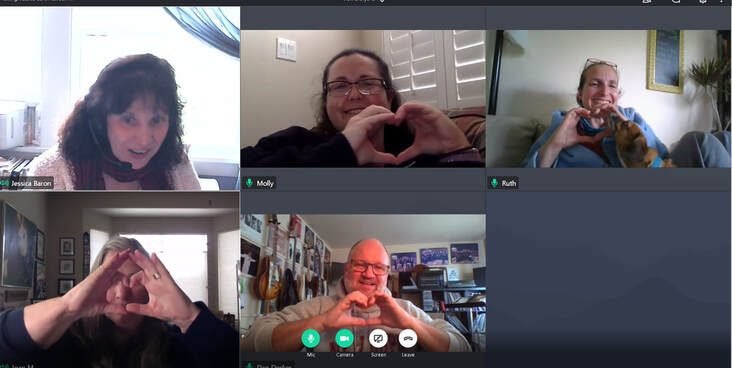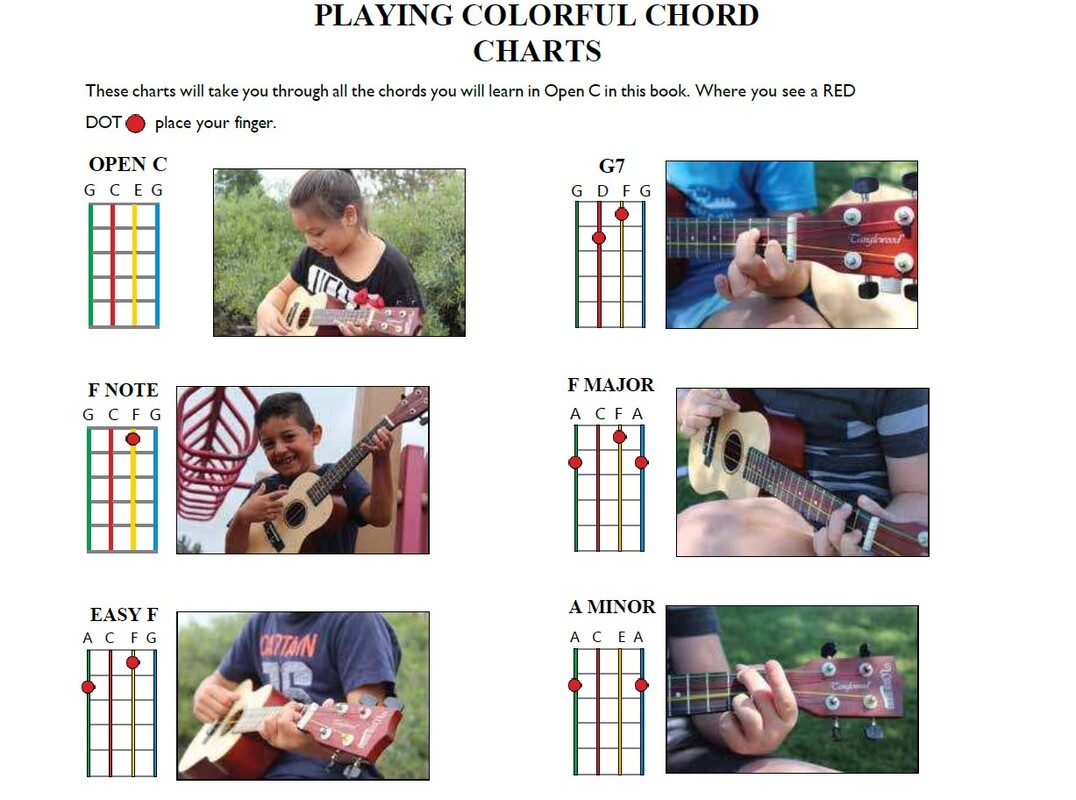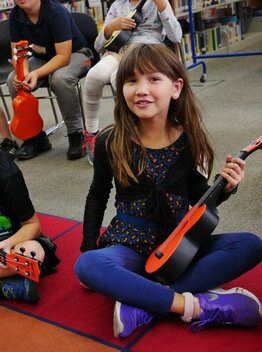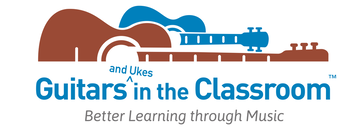|
Want to lead a short, productive, inclusive and joyful music experience in your online classroom? This How-To blog will help you make the process simple and goof-proof. Leading your students in a song online each day can bring them together, establishing a sense of belonging, happiness and normalcy. Done the GITC way, each student can participate, feeling valued and “heard” while hearing others. Together, your students can collaborate and support each other to create something enjoyable. In the face of disruptions, bad news and stress at home, this can do a world of good. You can be the bringer of this goodness. Bye-Bye, Perfection. None of us are trying to win a contest. We are teachers and we want to bring music to our students. They are so eager to make music, they appreciate our efforts. So let's relax, have fun, and show the kids we can all make music. They need it. They need you to lead it. Having the courage to strum and sing on camera will model creative risk taking for them, and will build your skills. You can ask the students for encouragement, be open and honest, and then take the plunge! Remember to mute them while you are leading so you can concentrate. Then unmute them selectively to check for understanding and facilitate class discussions. Your students will need to learn online classroom ground rules and etiquette just like they do at school. Without being in the same physical space, and with tech at their fingertips, they need to know what is and is not okay, how to get your attention appropriately, how to respond to peers. This is all preliminary learning. We hope someone writes a song about this! Taking time to establish the order of communication operations will help so much in this regard. Going easy on yourself and them emotionally is important because stressors are high, so rules matter but putting them across with love will work wonders. Right now students need to connect, breathe, find their friends and relax together. Teaching academic content through songs gets easier once students feel seen, heard, safe and connected. So let’s start making music to lower stress and achieve social-emotional wellness. Once this is established, content learning can happen. We’ll get to that in a future blog. This first GITC blog will lay-out a simple process with clear, sequential instructions to unite your students through song. To assure you songleading success and help you as the online tech “pilot” our team has created this list to steps and tips so you might have a smooth experience. We recommend following the steps in order.  STEP ONE, TACKLE YOUR TECH Like any online teaching, the first step is to know your online platform. Learning can only happen when tech is working for everyone. You will want to be able to accomplish many things well before you have to "pilot the ship." LEARN TO SET IT UP Know how to set up your meeting. Do you want to use a secret password and share it with invitees? Can you lock down your online session to exclude any surprise unwanted visitors? Does your platform have break-out rooms for student groups to meet? Do you have screen sharing or a white board? Think ahead to what tools you will want to use, and take the time to get this in place. Only then, send your invitation out. FINE TUNE YOUR OWN CAMERA AND MIC. Have a look on your own computer screen to make sure your students will be able to see your face, hands and musical instrument and to hear your voice. TRY OUT YOUR VISUAL and AUDIO TOOLS If you are teaching on a platform that does not allow you to share your screen and you are working on a PC, we recommend installing and setting up open source software OBS Studio. It gives you a nice range of visual options. Practice screen sharing between a song chart/lyric sheet on your screen, and you. The students will benefit from seeing both. If you cannot screen share, ask a parent to assist you by putting the song chart up on THEIR screen.
 STEP TWO: PLAN YOUR MUSIC SESSION! CHOOSE HOW and WHEN TO INCLUDE MUSIC. Think about the role you want music to play. Will you open class with a song? Finish with one? Or insert a song partway into a lesson to enrich the learning experience? This will help you choose songs and time the music making. Leading even 5 minutes of music makes a very significant difference for students in their mood, motivation and self confidence So what will you need to get ready? BEGIN WITH A WELCOME SONG Select a familiar participatory song to welcome students. We recommend a name song or a song the children know that makes them happy. Whatever you choose, let it be one you know well enough to get through without forgetting.
PREPARE A QUICK RHYTHM WARM UP Use clapping patterns to get kids listening to your instructions and tuning into playing together. Initiate a series of short clapping patterns and after each one, cue the students to copy you. Play them with a faster or slower tempo. Next give individual students a turn to lead a clapping pattern and have their peers copy them. The students will enjoy seeing each other and interacting this way together. CHOOSE A SPECIAL SONG TO SHARE This song can be something new or something familiar. Find one you feel fairly confident in singing and strumming. Simple is okay. Or you may want to teach a new song!
 HOLD YOUR MUSIC TIME
0 Comments
Leave a Reply. |
BlogArchives
June 2024
Categories
All
|
Copyright © 2024 Guitars In The Classroom. All rights reserved.

 RSS Feed
RSS Feed